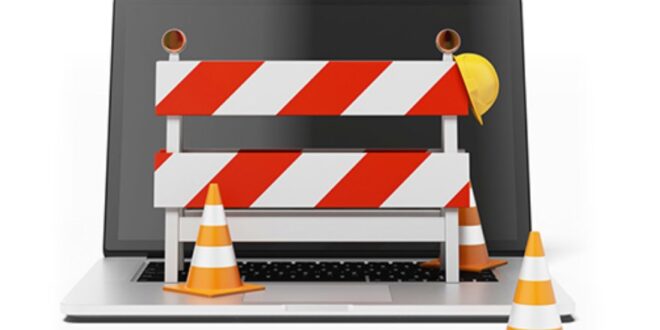The IT infrastructure of your business is built to keep the processes of your organization up and running 24/7. However, in the unfortunate event that your IT infrastructure collapses or becomes extremely slow, it can result in a large loss of business revenues. This is more notable in the telecommunication industry where customers have to use services such as mobile phone calls. A downtime of just one minute can result in a loss of thousands of dollars because of the number of people that fail to make phone calls, which is lost revenue for the telco business.
Moreover, a lot of businesses these days operate entirely online or have transferred the largest chunk of their operations online, which often includes remote working. IT services for businesses that are dependent on the web should be maintained at optimum levels.
The Impact Of IT Downtime
Your business is bound to experience a negative impact from IT downtime in the following ways:
- Lost productivity
- Lost opportunities
- Brand damage
- Data loss
- SLA (service-level agreement) payouts
It’s the job of your IT team to ensure that any possibility of downtime is mitigated even before it happens. To help you, this article discusses eight strategies that your business can adopt to minimize the chances of experiencing business IT downtime:
1. Leverage Cloud Services

Some disasters may occur to your business and cause nearly irreparable damage to your business. These could be a tornado, fire, flood, or other catastrophes that can destroy your business server leading to an entire or a massive data loss. When there’s a loss of business data, the chances of recovery, at times, tend to be zero.
To mitigate these effects, you should stop using your business premises as the primary storage location of your business data. You can consider migrating your business data to cloud services which are usually found on colocation centers. These cloud services from providers like infotech.com.au are more convenient, reliable, and safer.
Colocation centers are backup points to safeguard against data loss resulting from various causes, including natural catastrophes such as earthquakes. Besides, the type of building used in cloud services can withstand the worst of natural disasters. Additionally, its level of cybersecurity is impenetrable, which means that the possibility of data theft is almost impossible.
2. Maintain And Update Equipment Regularly
Downtime in your business can come from equipment that isn’t functioning as it should be. Equipment that isn’t up to date or doesn’t get regular maintenance may slow down your business workflow. If you’re cutting down on business expenditure, you’ve probably thought of reducing the maintenance costs of your equipment.
However, in the long run, this may result in a major downtime because of failed equipment. In worst cases, this may demand a total overhaul of the equipment which can be more expensive than the cost of periodical maintenance. Also, don’t forget that part of your equipment maintenance should include up-to-date software.
3. Invest In New Software Technology

Over the years, computerized maintenance management system (CMMS) software has evolved and even influenced the manufacturing industry. Intelligent systems are now on the market for simplified work scheduling and easier production processes. The advantage of this software technology is that it can be automated for continuous workflow without the need for human intervention. CMMS software can also be integrated with other software for seamless processes.
Don’t be hesitant to incorporate new software technology in your business for fear of how your staff will be able to learn how to use it. Most software programs can be installed and used immediately. More importantly, the earlier you keep in phase with new technology, the better are your chances of remaining more competitive and relevant in your field.
4. Incorporate A Load Balancing Service
Some of the network challenges that you may experience in your organization may be a result of various equipment in your network not being able to communicate with one another properly. This trickles down to the improper distribution of data traffic between your servers. A load balancer can thus come in handy to help you address this issue. A load balancer will help ensure that traffic is distributed evenly across your servers so that the chances of any server being overwhelmed by tasks are reduced.
5. Increase Network Redundancy

No business can afford to have a network downtime even for a while. To strengthen your infrastructure, you need to have several network access points and networks that you can switch to in case your main network collapses. A good network redundancy doesn’t mean that it’s all from the same internet service provider. It means that you have different network carriers and providers.
6. Schedule Network Checks
Your network infrastructure may also encounter unexpected interference from problems caused by clumsy people, or even critters that chew on your network cables and result in downtime. The best way to handle this is by having weekly inspections of your cables to ensure that they’re in good condition and are working properly. Non-functioning network cables should be replaced as well as faulty equipment. Also, ensure that the temperature of your server room is kept cool to avoid overheating.
7. Perform Regular Backup Server Tests

Your backup is only useful if it can be accessed and is working properly. If your main server fails, your only option is to restore the server. Even when the main server is perfectly working, you need to test the possibility of having to restore your backup to ensure that you’re always safe. So, in case the backup isn’t working, you can replace it and make sure you have a working one in place.
8. Use Enterprise-Level Network Infrastructure
It would be unwise to compromise quality for cost and settle for lower-grade hardware. The truth is that enterprise-level infrastructure proves to be more economical in case your network fails. Also, high-grade equipment is more reliable, meaning it’s impossible to have low productivity due to network downtime. For fast network speeds, use fiber optic cables instead of traditional ethernet cables. Initially, fiber optic cable used to be very expensive but the price has dropped significantly, making it affordable for many businesses.
Final Thoughts
IT downtime is the last thing that you’d ever want to experience in your business. The costs are expensive due to reduced productivity, data loss and it can destroy the reputation of your business. Employ measures that will keep them from ever taking place by having a redundant network, updated software, enterprise-level infrastructure, and data storage on cloud services. Don’t forget to schedule regular network and equipment maintenance, and include load balancing equipment in your network.
 Comeau Computing Tech Magazine 2024
Comeau Computing Tech Magazine 2024




